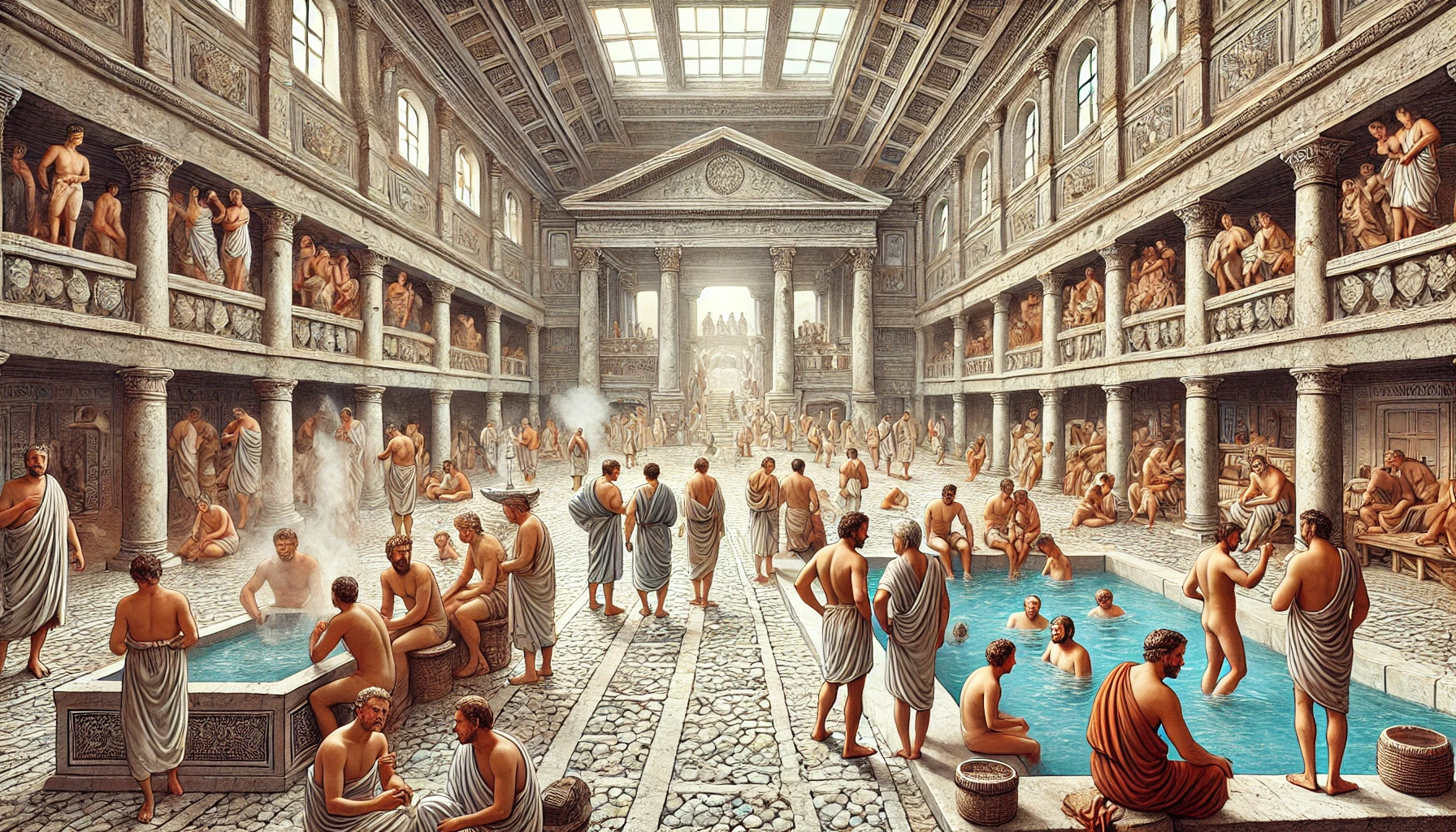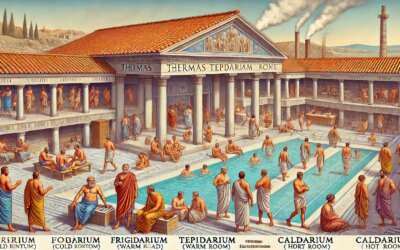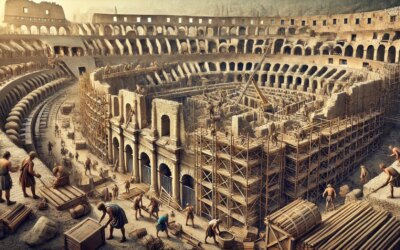Introduction
Bathing was an essential part of daily life in ancient Rome. The public bathhouses, or thermae, were not just places for hygiene but also centers for relaxation, business, and social interaction. From the grand imperial baths of Caracalla to smaller neighborhood baths, these spaces reflected the Romans’ commitment to cleanliness, engineering excellence, and communal life.
The Structure of a Roman Bathhouse
Roman bathhouses were complex architectural marvels designed for efficiency and comfort. A typical thermae included:
- Apodyterium: The changing room where visitors stored their belongings.
- Tepidarium: A warm room used for relaxation and preparation before entering hotter areas.
- Caldarium: A hot steam room, often with a heated pool, where bathers could sweat out impurities.
- Frigidarium: A cold bath where visitors would refresh themselves after the hot rooms.
- Palaestra: An exercise courtyard where Romans engaged in physical activities before bathing.
The Social and Cultural Importance of Baths
Bathhouses were more than just hygiene facilities; they were essential to Roman social life. Politicians held meetings, philosophers debated ideas, and ordinary citizens gathered to exchange news. The baths also featured libraries, gardens, and even entertainment areas, making them multifunctional hubs of Roman culture.
Engineering and Innovation
The success of Roman bathhouses was made possible by advanced engineering techniques. The hypocaust system, a network of underground heating chambers, kept the floors and walls warm. Aqueducts supplied fresh water, ensuring a continuous flow to the pools. These innovations allowed Romans to enjoy sophisticated bathing rituals unmatched in the ancient world.
The Decline of the Thermae
As the Roman Empire declined, so too did its bathhouses. Economic troubles, maintenance costs, and invasions led to their gradual abandonment. However, their influence lived on, inspiring later spa traditions in Europe and beyond.
Conclusion
Roman bathhouses were symbols of a civilization that valued hygiene, community, and relaxation. Their legacy continues in modern spa culture, proving that the Romans’ appreciation for bathing remains relevant even today.






